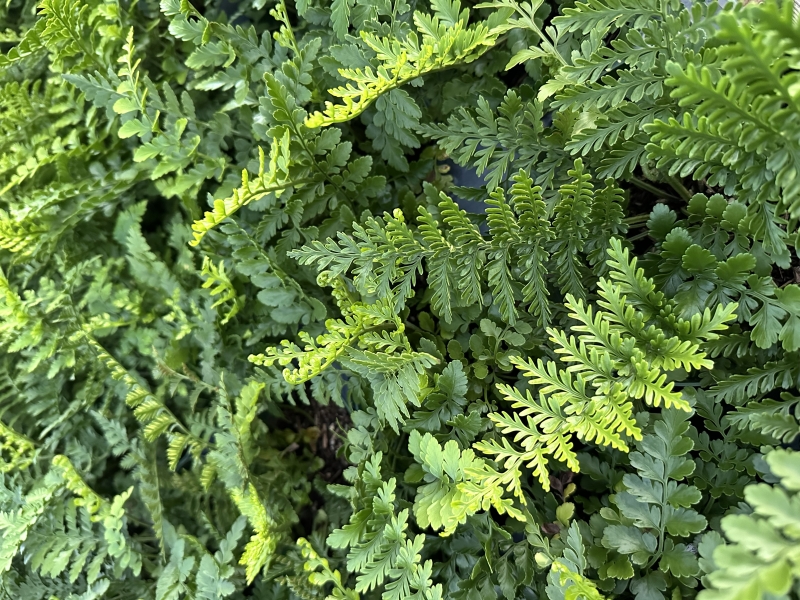Asplenium ‘Austral Gem’
Austral Gem fern
Durable lacy fern doesn’t get tippy in low humidity. Great in pots or as a filler in a woodland or tropical garden design. Sterile and without spores. Tolerates coastal exposure.

 |
height |
18–24in |
 |
width |
1–2ft |
 |
tolerates |
Fog, Moist Soil, Pots, Salt |
 |
water
needs |
Moderate – High |
 |
water
info |
Water this plant regularly and deeply, when the surface of the soil has dried. Usually this is once or twice a week in dry weather. |
 |
hardy
to |
23F |
 |
exposure |
Full Shade – Part Sun |
 |
indoor
outdoor |
Outdoor |
 |
drainage |
In Ground: Planting Mix, In Pots: Potting Soil |
 |
fertilizing |
All Purpose |
 |
origin |
Hybrid, E Australia |
 |
california
native |
No |
 |
sunset
zones |
15–17, 20–H2 |
OUTDOOR EXPOSURE GUIDE

Full Sun
Six or more hours of sun beams directly landing on the plant's leaves.
Part Shade
Three to five hours of sun beams directly landing on the plant's leaves.
Part Sun
One to two hours of sun beams directly landing on the plants leaves.
Full Shade
The plant is never fully lit by sun beams,
but is in a bright spot or has dappled sunbeams playing over the leaves throughout the day.
Deep Shade
The plant never has dappled light on the leaves, and is in a place that feels dim, even on a nice sunny day.
SUNSET ZONES MAP

Growing Notes
The leathery leaves of this asplenium, a bird nest fern relative, make this plant more resilient to low humidity. While it prefers ample water, it won’t shrivel and die with a missed watering or two. If you struggle to keep typical ferns happy this one might be the one for you!
Special Interest
Asplenium dimorphum x difforme
This plant makes little baby ferns on the leaves that can be removed and planted. In nature this common fern adaption helps this fern to ‘walk’ across the forest making colonies. They don’t typically spread in the garden, but you may find a fern popping up here or there near the base of your plant.
More Info
Isn’t this a houseplant? Well that’s a tricky question. In general this type of plant makes a great houseplant, but this specific plant hasn’t been grown to be a houseplant. Houseplants are grown under regulated conditions and with sterile soil setting them up to thrive in your home. When outdoor grown plants are taken indoors they tend to transition poorly, often becoming magnets for pests. That said, if you insist on taking this plant indoors here’s some advice to help you out. Start by unpotting the plant and removing any loose soil without damaging the roots. Next preemptively treat the entire plant, including the roots with an insecticidal soap. Use a new nursery can or sterilize the previous one with bleach. Repot the plant in a fresh mix and then water deeply with the insecticidal soap mix. Be sure to keep an extra close eye out for any pests that might pop up. Always consider the risk of introducing pests to your other houseplants.


